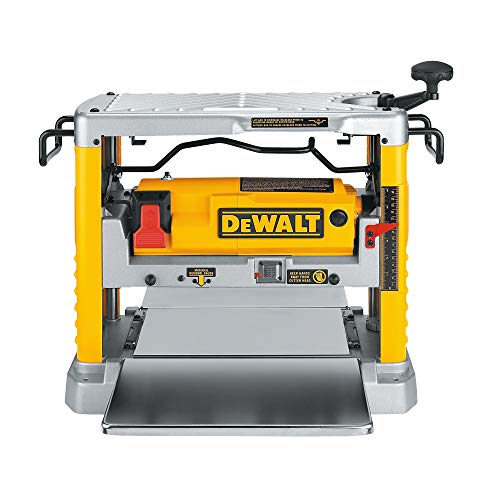Hand planers are perfect for finishing wooden surfaces. They are easy to use, cost-effective, and come in different shapes and sizes. From manual planers to benchtop thickness planers, they can help you create a smooth, even finish without spending much money. In this article, we’ll discuss the history of the hand planer, the types of hand planers available, their advantages and benefits, and our conclusion.
History of the Hand Planer:
The hand planer is one of the oldest tools in the wood working industry, having been around for centuries. It began as a handheld tool to plane rough wood to a smooth and even finish. During the 1700s, manufacturers began mass-producing hand planers, which made them more affordable and accessible to woodworkers.
The first hand planers were cast iron and had a single blade. These planers were primarily used to plane the edges of rough wood. As the technology developed, planers began to feature multiple blades that could plane a wooden surface more accurately. This allowed woodworkers to plane the surface of their wood to a smoother finish.
In the 1800s, more modern versions of the hand planer emerged. These planers came with adjustable blades that could plane the surface of the wood to different depths. This enabled woodworkers to achieve various finishes on their projects. The hand planer began to be used for more intricate pieces, such as shaping moldings and reeding.
By the 20th century, the hand planer had become an indispensable tool for woodworkers. With the invention of power tools, manual planers began to be replaced by electric and benchtop thickness planers. However, hand planers are still widely used, especially for intricate projects.
Types of Hand Planers
There are several types of hand planers on the market today. Each type offers unique advantages, so it is crucial to consider the kind of job you’re doing before selecting the right tool. The most common hand planer is a manual planer, typically made from wood and ideal for creating smaller, detailed woodwork. Manual planers are also effective for creating joints and edges.
Another popular hand planer is the benchtop thickness planer. These planers are usually cast iron and are designed for large-scale projects. This type of planer is great for creating larger pieces of woodwork. It is also ideal for creating a uniform thickness on the wood.
Thickness planers are another type of hand planer. They are typically made from steel and designed for larger woodwork. These planers are ideal for creating woodwork with a uniform thickness. They are also great for creating edges and joints.
Finally, there are portable planers that are typically made from plastic and are perfect for small projects. They are lightweight and easy to transport, making them ideal for those who need to take their tools from one site to another.
Advantages and Benefits of Using a Hand Planer
Consider a hand planer if you want a tool to help with your woodworking projects. This is an excellent tool if you want to finish off your projects and make them look great. Hand planers offer many advantages and benefits to carpenters and woodworkers.
The most obvious benefit of a hand planer is that it helps give the wood an even, smooth finish. This is especially important for those looking to create a specific shape or design in their woodworking projects. Using a hand planer, you can ensure that the wood’s edges are even and that the overall shape is consistent. This makes it easy to create a professional-looking product.
Another benefit of using a hand planer is that it’s easy to control. You can easily adjust the planer’s depth to get the desired finish. This is especially useful for those looking to get a specific effect on the wood. For example, if you want to create a rustic look in your project, you can use a hand planer to create a distressed, aged look.
Moreover, hand planers are usually lighter and easier to handle than other planer types. This makes it easier to work with, particularly in tight spaces. For example, you can easily maneuver your planer in a small workshop and get the perfect finish.
Finally, hand planers are typically more affordable than other types of planers. This makes them ideal for those who are just starting in woodworking and don’t have a large budget.
Overall, hand planers are a great tool for those looking for a tool to help them create a professional-looking finish for their woodworking projects. With its many advantages and benefits, it is easy to see why it is such a popular tool among woodworkers.
Conclusion
Hand planers are handy tools for woodworkers and amateurs alike. Not only do they provide the user with the ability to get accurate and precise results, but they are also easy to use and require little maintenance. Their portability and unique designs make them excellent tools when working in tight spaces or with smaller projects. They are relatively affordable and need minimal setup time, making them a great addition to any workshop. All in all, hand planers are the perfect tool for finishing wood and making it look its best.


